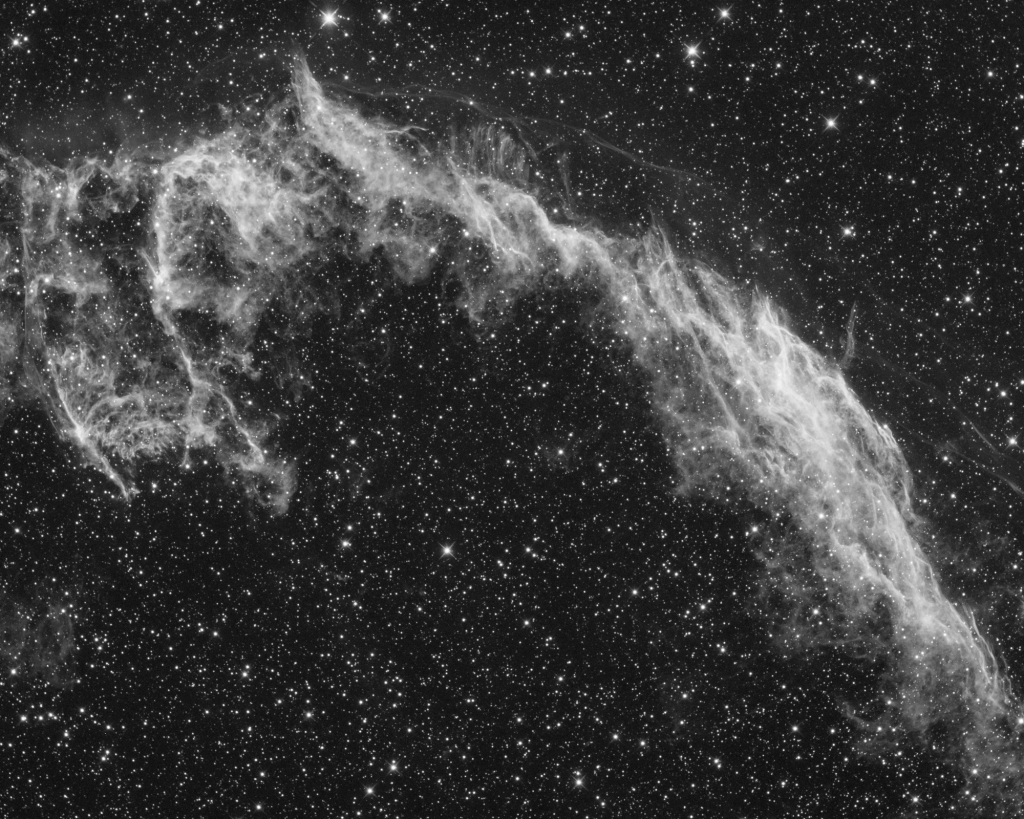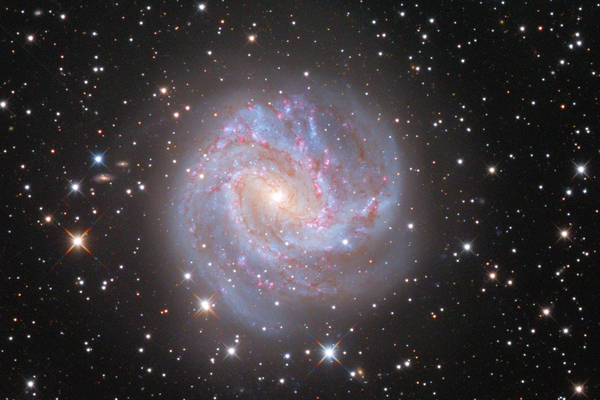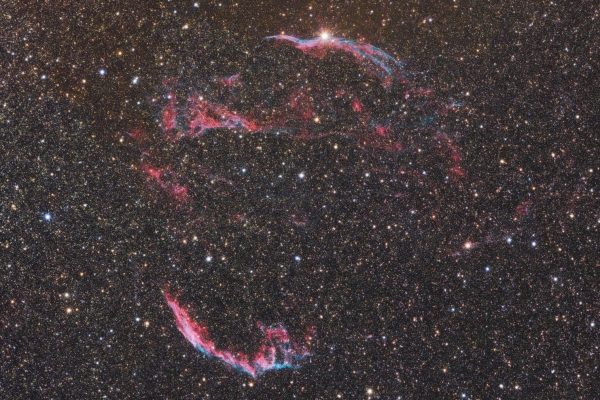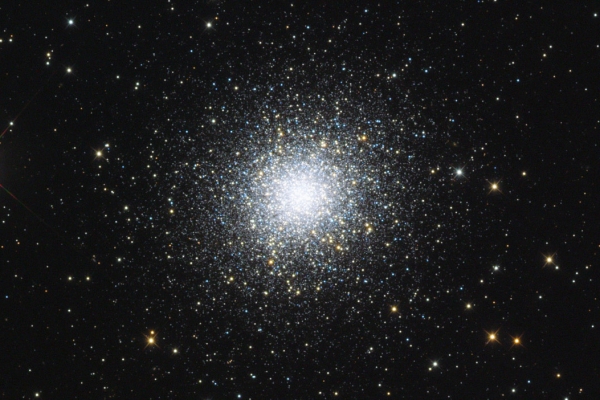The Eastern Veil Nebula
NGC6992 and NGC6995

Technical data
| Instrument: | 173/700 Newton-astrograph (ZsIO), SkyWatcher comacorrector F/4 |
| Camera: | Atik One 6.0 |
| Filter: | Baader H-alpha 7nm |
| Mount: | SkyWatcher NEQ6 Pro Synscan (modified) |
| Guiding: | Lacerta M-Gen autoguider, OAG |
Image data
| Exposure time: | 18 x 15 mins |
| Location, date: | Hungary, Izsákfa - 2015.July 21. |
| Transparency: | 6/10 |
| Seeing: | 4/10 |
| Temperature: | 17 °C |
| FWHM: | 2.60" |
| Processing: | CCDStack, Photoshop |
Photo in progress:
50%
50%
Description
Delicate in appearance, these filaments of shocked, glowing gas, draped in planet Earth's sky toward the constellation of Cygnus, make up the eastern part of the Veil Nebula.
Technical data
| Instrument: | 173/700 Newton-astrograph (ZsIO), SkyWatcher comacorrector F/4 |
| Camera: | Atik One 6.0 |
| Filter: | Baader H-alpha 7nm |
| Mount: | SkyWatcher NEQ6 Pro Synscan (modified) |
| Guiding: | Lacerta M-Gen autoguider, OAG |
Image data
| Exposure time: | 18 x 15 mins |
| Location, date: | Hungary, Izsákfa - 2015.July 21. |
| Transparency: | 6/10 |
| Seeing: | 4/10 |
| Temperature: | 17 °C |
| FWHM: | 2.60" |
| Processing: | CCDStack, Photoshop |
© Patrik Tarczi 2016
Recommended photos

Southern Pinwheel Galaxy
Southern Pinwheel Galaxy, also known as the M83, is a barred spiral galaxy located in the southern constellation Hydra.

The complex of Veil Nebula
A widefield photo of a famous supernova remnant called Veil Nebula. Located in contsellaton Cygnus.

The Great Globular Cluster
The Great Globular Cluster is brighty shinning deep sky object in constellation Hercules.


